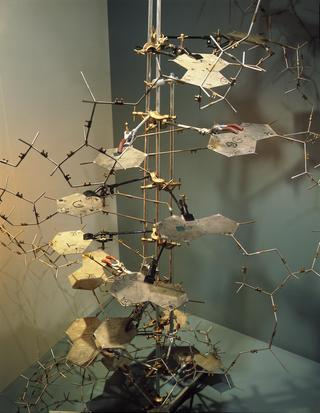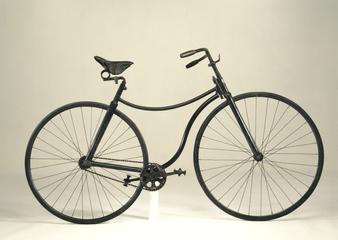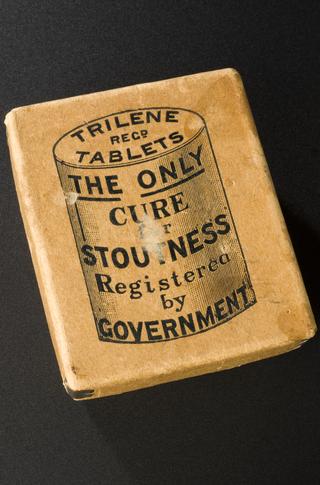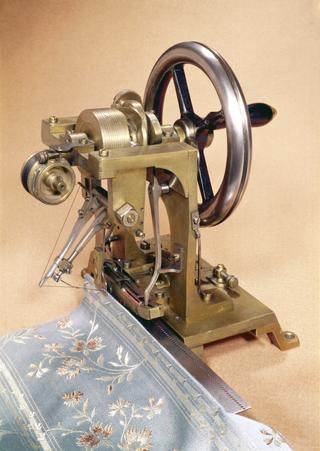
Arkwright's Water Frame, 1775

Improved spinning machine (water frame), by Sir Richard Arkwright, England, 1775.
These spinning machines were driven by water power at Arkwright's Cromford mill, hence the name of Water Frame. Compared to Arkwright's original prototype, the machine is capable of spinning eight threads at a time, rather than four. Subsequent machines were vastly enlarged, although the wooden (rather than iron) framing remained in use into the 1790s. Prepared cotton is passed through three pairs of drafting rollers at the top of the machine - these rotate progressively faster, straightening the cotton fibres out. The flyer below winds the thread on to the rotating bobbins, twisting the cotton fibres together as it does so. This is just one of a suite of machines, each covering part of the cotton spinning process, which revolutionised manufacturing processes in the cotton industry, which was seen as the leading mechanised industry during the early Industrial Revolution.
Regarding this machine spefcifically: It is an improvement on Arkwright's first machine (inv. no. 1860-4) in having an arrangement for guiding the yarn over the bobbins evenly, and in containing more spindles. The driving arrangement is very similar to that used in 1860-4. The belt from an external main driving pulley, in addition to turning the spindles, drives two drums, placed on the vertical axes, which transmit motion to the drawing rollers above. Each of these vertical shafts drives four sets of rollers, and there is an arrangement for throwing either shaft out of gear. There are three pairs of rollers, the top ones covered with leather, and the lower ones fluted, their speeds being in the ratios 1 : 1.6: 18.4. The spindles, of which there are eight, are provided with fliers which carry the thread round the bobbins and at the same time twist it, just as in the earlier machine. Regular winding upon the bobbins was secured by the following mechanical means : at the back of the machine, near the ground, is a wooden shaft driven by a belt from the roller gear, and having a cam fixed at each end pressing against a roller fixed in a frame, which swings in trunnion bearings above, and has the lifting rail attached to it in front. This rail has eight plates projecting from it, through which eight spindles pass, and on these plates the bobbins rest. As the heart-shaped cam revolves, the swinging frame or bell- cranks move the rail and bobbins up and down, so that the thread is wound on at different parts of the bobbin in succession. This very important improvement is believed to have been first introduced by James Hargreaves. Machines of this kind driven by water power were used by Arkwright at Cromford, in Derbyshire, hence the name of water frames by which they were known. The throstle frame is the same in principle as this machine, the improvements being chiefly in its details and mechanical construction.
Details
- Category:
- Textiles Machinery
- Object Number:
- 1860-5
- Materials:
- wood (unidentified), leather, cast iron, wrought iron and brass (copper, zinc alloy)
- Measurements:
-
overall: 1170 x 720 x 1400 mm (approximate)
- type:
- spinning machine
- credit:
- Fothergill, B.




